The Maison à Bordeaux, otherwise known as Villa Lemoine, is a private residence built on a hill overlooking the French city of Bordeaux, born from Rem Koolhaas’ unique way of reinterpreting modern architecture.

Image source: https://commons.wikimedia.org/wiki/File:MAISON_%C3%80_BORDEAUX.jpg. Author:Ann Chou
From a Need Comes a Project
In 1994, Dutch architect Rem Koolhas was contacted by a couple living in an old house in Bordeaux; the husband had suffered a car accident that left him wheelchair bound, turning his home into what felt like a prison. In his own words describing the commission,
Contrary to what you would expect, I do not want a simple house. I want a complex house, because the house will define my world…
Jean-François Lemoine, house owner
Koolhas proposed a house built on three different levels, with a fourth, ‘‘floating’’ component as the key to the entire complex: a room sized , moving platform, providing easy and comfortable access to each floor.

Image source: https://oma.eu/projects/maison-a-bordeaux
Redefining Space
Koolhaas envisioned the project as an ever changing structure, a moving engine with a machine as its heart: “This movement alters the house and its architecture”, stated the head of OMA “It was not about some ‘Now we do our best for an invalid person’ ; the very starting point is instead a negation of invalidity”.
Situated on a hill with a panoramic view over the city, the Maison, more than a single entity, acts as three houses on top of each other: the lower level is a series of artificial caverns carved out of the hill, designed for the most intimate aspects of the family life; the ground floor, on garden level, is a glass room – half inside, half outside – acting as main living room; and the upper floor, comprising bedrooms made out of concrete volumes, is divided into two – children’s and a parents’ – areas.
This more “heavyweight” section aims to, in Koolhaas words, define the tensions that regulate the balance between floors, making it appear as if the top floor is “hovering” above the much lighter lower ones; as such, a safe, intimate space comes to life, in stark opposition to the open air feeling of the areas below.
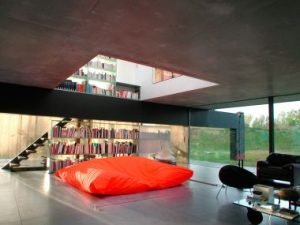
Image source: https://divisare.com/projects/302583-oma-maison-a-bordeaux
The elevator connecting these sections is a 3 x 3.5m open platform, using an oleodynamic lifting mechanism to move freely between the three floors, becoming part of the living space or kitchen or transforming itself into an intimate office space; a three meters tall library acts as a wall, granting access to books, artwork, and even a wine cellar area.
Koolhaas described the elevator as “having the potential to establish mechanical, rather than architectural, connections”, as the main element around which Lemoine House was built.
The platform could be touching the floor or hovering above it…an architectural metaphor for the flight it offered to an immobilised man
Daniel Zalewski, writing for the New Yorker
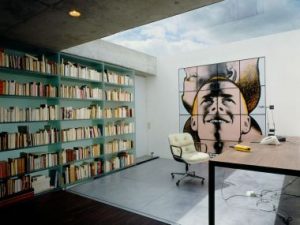
Image source: https://oma.eu/projects/maison-a-bordeaux
Outside the box of accessible design
The house, per its creator’s words, came to be as a close collaboration between him and his clients, basing its most peculiar choices around the client’s requests: elements, such as the total absence of railings, or the great round windows (designed to be opened by a movement impaired occupant) “would have never been proposed without an intense cooperation with the client”.
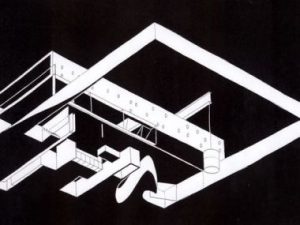
Image source: https://oma.eu/projects/maison-a-bordeaux
However, the death of Jean-François Lemoine in 2001 meant that the house’s unique purpose could no longer be of service.
“The elevator became a monument to his absence”, claimed Koolhaas in 2005.
The architect suggested a restyling, turning the studio – like area on the platform into an informal TV room, and completely renovating the furniture, now modern, voluminous and with sharp, geometric shapes.
It now speaks of chaos and noise, instead of order.
Rem Koolhaas, regarding the house’s restyling
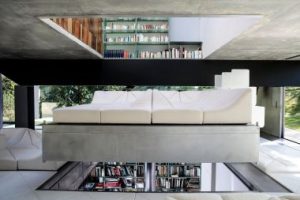
Image source: https://oma.eu/projects/maison-a-bordeaux
Louise Lemoine, one of the daughters raised in the Maison, became an independent director, paying tribute to the house, its inhabitants, and their daily challenges in the movie “Koolhaas Houselife“.
Data Sheet
- Architect: Rem Koolhaas;
- Location: Bordeaux, Gironde, France;
- Project: 1998;
- Construction: 1994-1998;
- Clients: Jean-François Lemoine and family;
- Program: 5 bedrooms, 3 bathrooms (main house); 2 bedrooms, 2 bathrooms;
- Notable accolades: Best of 1998 Design, TIME.
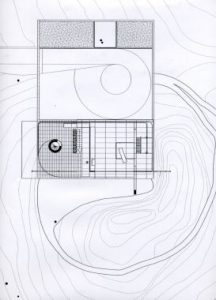
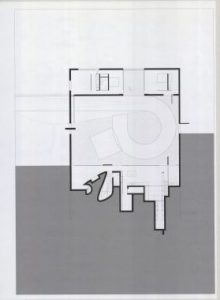
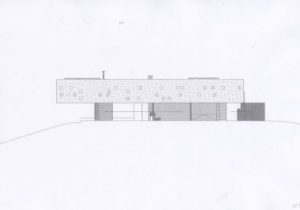
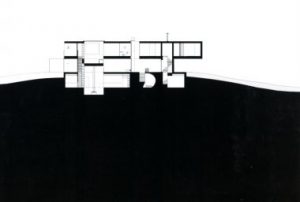
Images source: https://divisare.com/projects/302583-oma-maison-a-bordeaux
Info sources:
http://www.archimagazine.com/amaison1.htm
